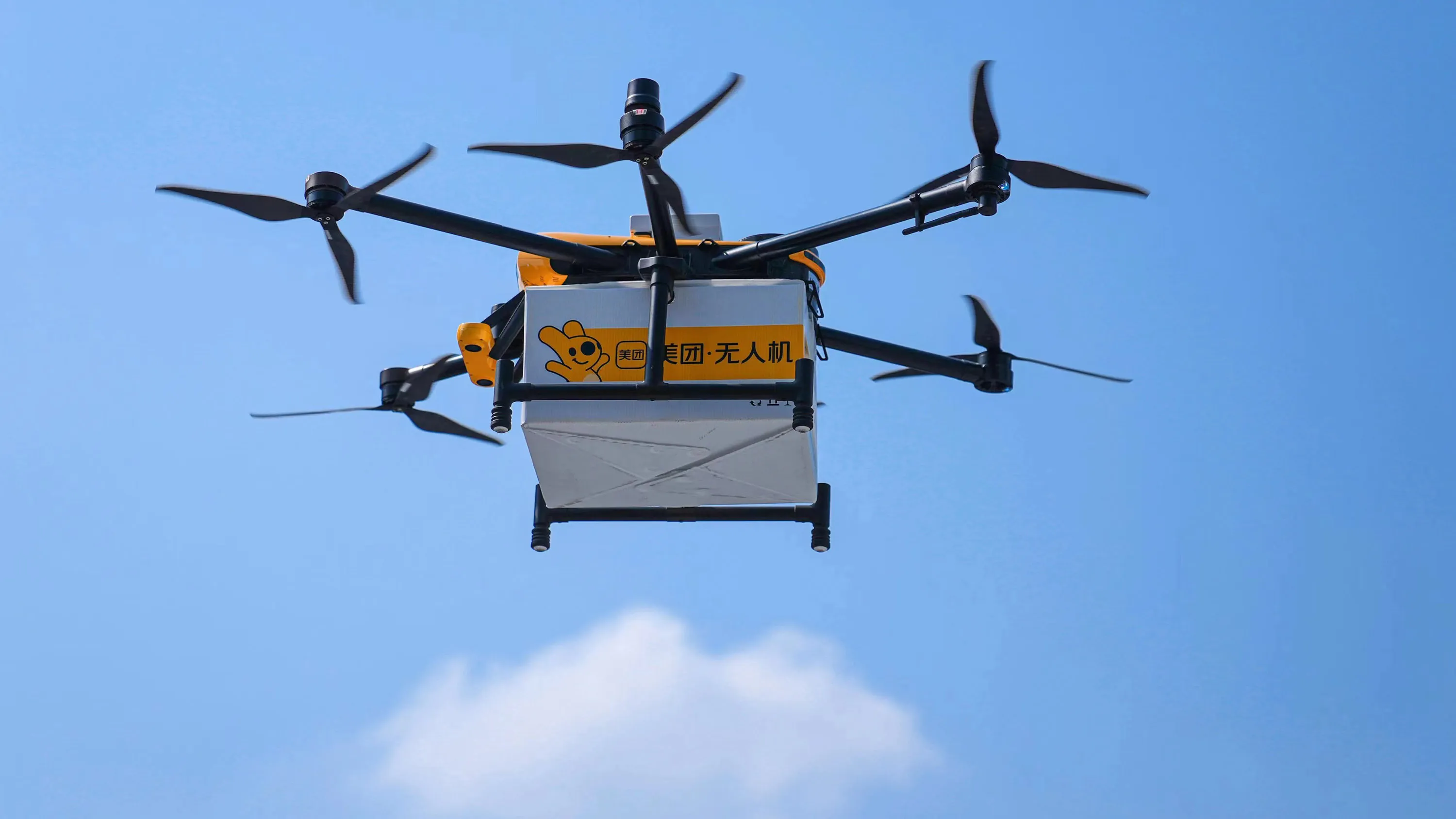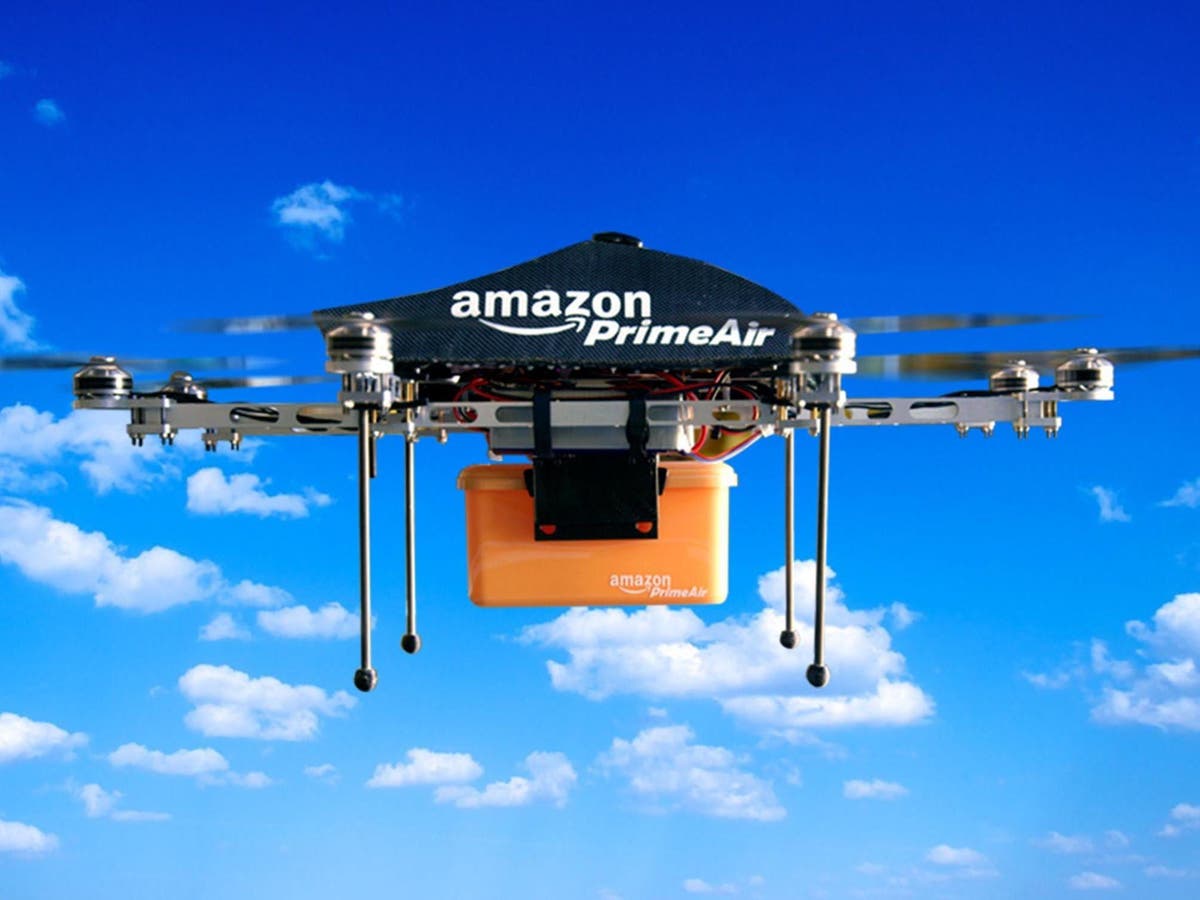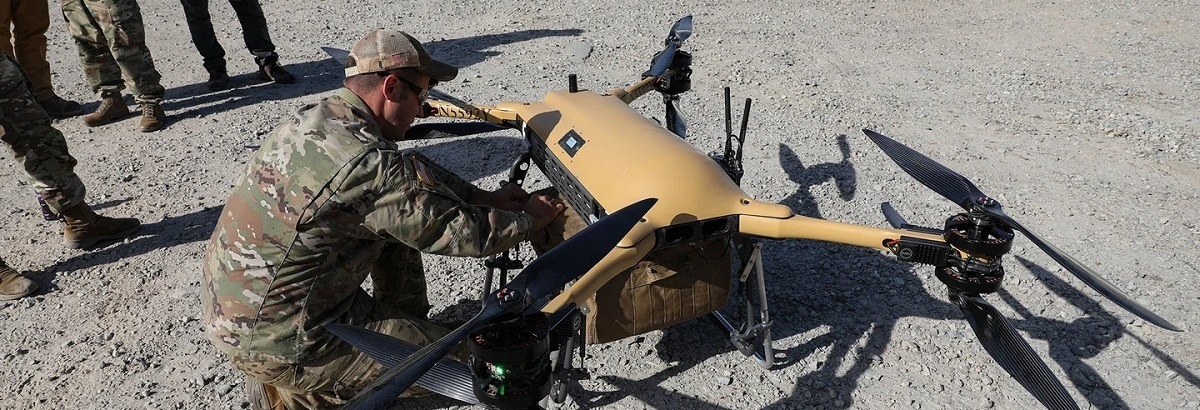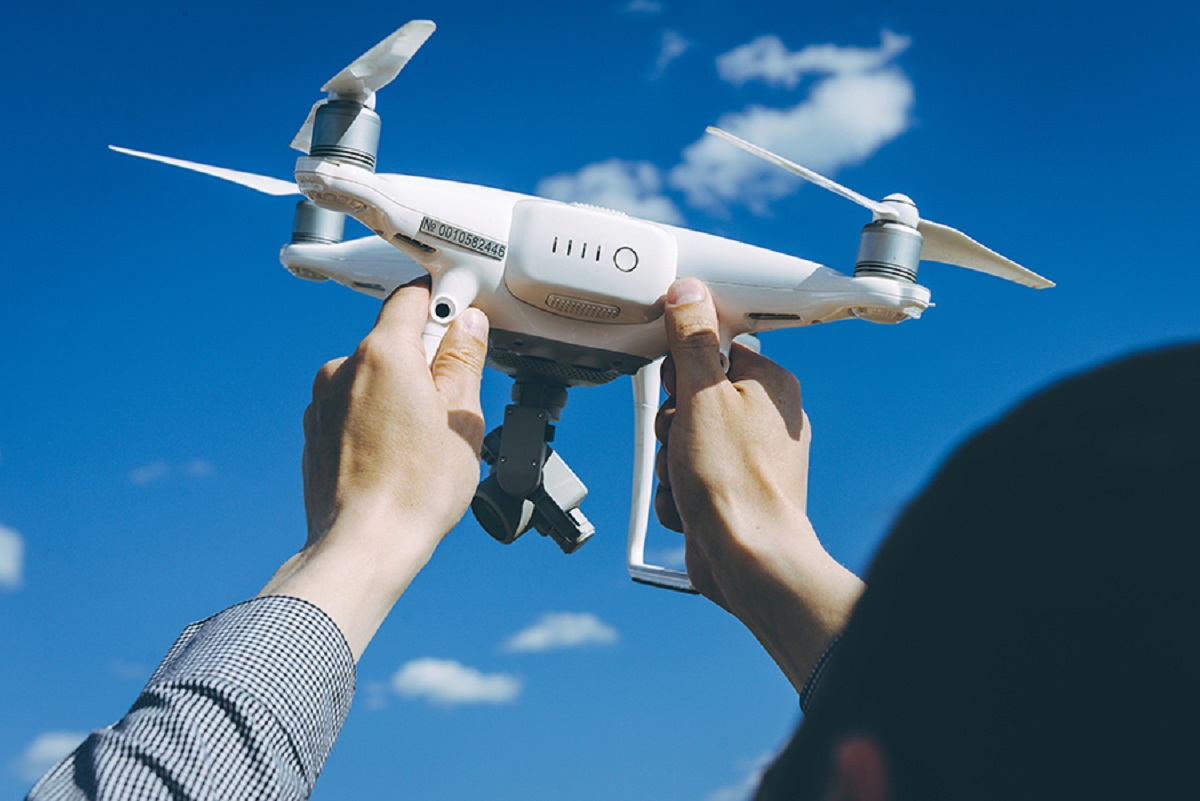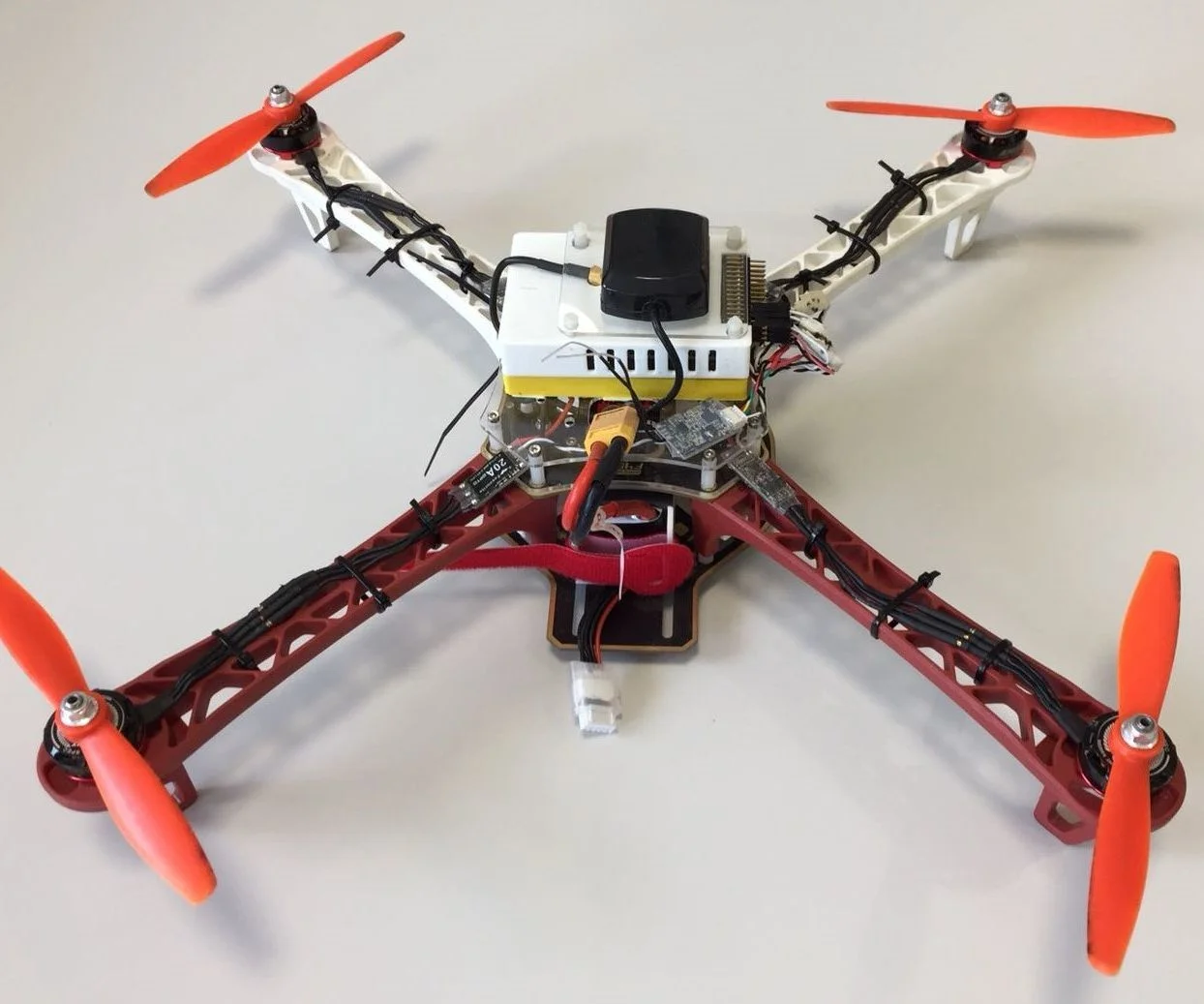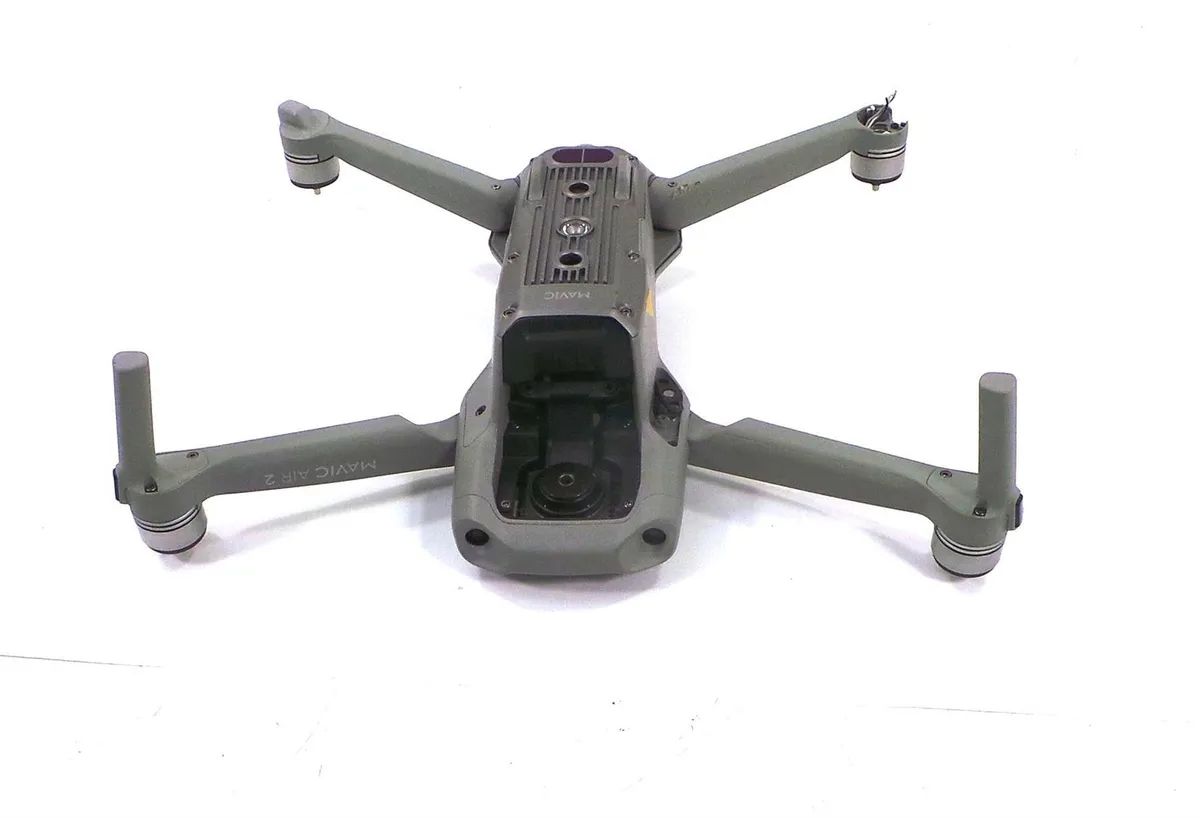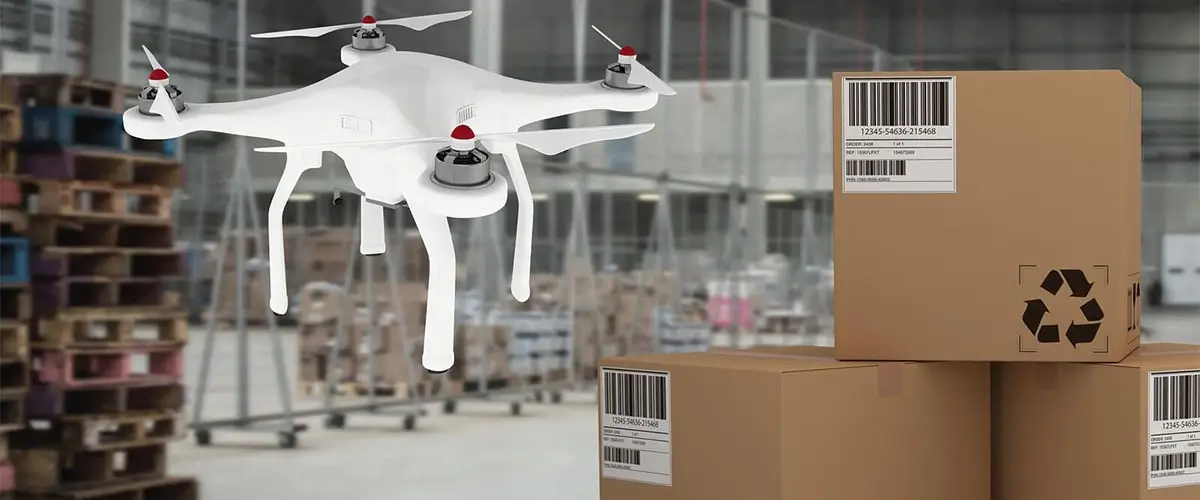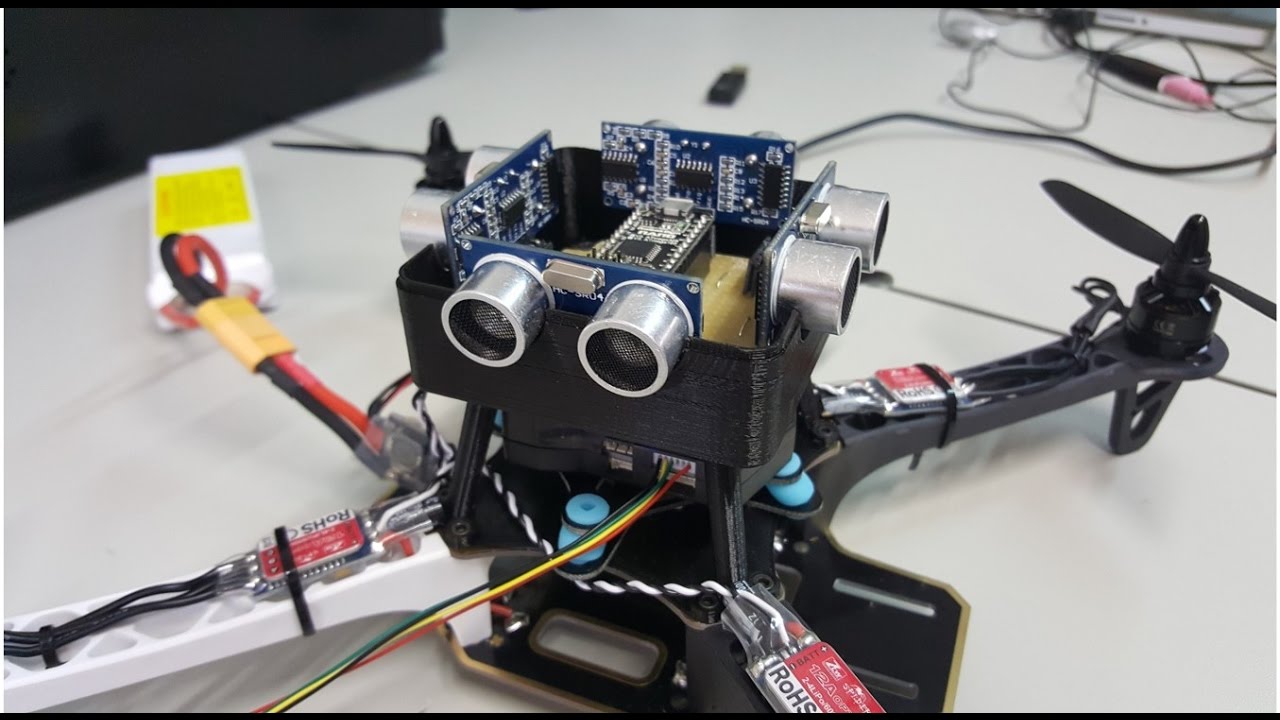The High Costs of Implementation
One of the main reasons why drone delivery has failed to become a widespread reality is the high costs associated with its implementation. While the idea of using drones to deliver packages may seem futuristic and promising, the reality is that the initial investment and ongoing expenses can be prohibitively expensive for businesses.
Firstly, the cost of acquiring and maintaining a fleet of drones is substantial. Drones, particularly those with the capability to carry packages of different sizes and weights, can be quite costly. Additionally, regular maintenance and repairs are necessary to ensure the drones are in optimal working condition.
Moreover, the infrastructure required for drone delivery adds to the financial burden. Companies need to establish distribution centers equipped with charging stations and landing pads for the drones. These centers need to be strategically located to ensure efficient delivery routes, which can also increase real estate costs.
Another significant cost consideration is the training and certification of drone pilots. Ensuring the safety and reliability of drone delivery requires well-trained pilots who are knowledgeable about airspace regulations and skilled in operating the technology. The training programs and ongoing certifications incur expenses that businesses must bear.
Furthermore, insurance costs for drone operations can be exorbitant. The risk of accidents, damage to property, and privacy infringements necessitates comprehensive insurance coverage. Insurers still have concerns about the reliability and safety of drone technology, which often leads to higher premiums for businesses.
Lastly, compliance with ever-evolving regulations adds another layer of complexity and cost. Governments around the world have implemented strict regulations regarding drone operations, including flight restrictions, privacy protection, and licensing requirements. Adhering to these regulations requires businesses to invest in legal counsel and compliance officers, further driving up expenses.
Despite the challenges and expenses associated with implementing a drone delivery system, some companies have ventured into this field, exploring ways to make it financially viable. However, until the costs of drone acquisition, infrastructure development, pilot training, insurance, and compliance decrease, the widespread adoption of drone delivery may remain an unrealistic proposition for many businesses.
Inefficient Delivery Routes
Another significant hurdle for drone delivery is the challenge of inefficient delivery routes. Unlike traditional delivery methods that utilize established road networks, drones need to navigate through the air, which presents unique obstacles.
One of the primary issues with drone delivery is the limited range and battery life of drones. Most commercial drones have a limited flight range, usually ranging from 10 to 30 minutes, depending on the size and payload capacity of the drone. This constraint significantly restricts the distance that drones can cover in a single trip, making it impractical for long-distance deliveries.
Additionally, the delivery of packages in densely populated urban areas poses challenges in terms of airspace restrictions and safety. City environments are often crowded with buildings, power lines, and other obstacles that can impede the flight path of drones. Furthermore, the presence of pedestrians and vehicles increases the risk of accidents and collisions.
The unpredictable nature of weather conditions also affects the efficiency of delivery routes for drones. Adverse weather such as strong winds, heavy rain, or snow can limit or even halt drone operations altogether. This unpredictability makes it challenging to ensure reliable and timely deliveries, potentially leading to customer dissatisfaction.
Inefficiencies in delivery routes can also arise from the lack of real-time information and mapping data. Unlike established road networks that have comprehensive mapping systems, aerial mapping data may be incomplete or outdated. This can lead to drones taking suboptimal paths or encountering obstacles that were not accounted for in their navigation systems.
Lastly, the limited payload capacity of drones can impact delivery efficiency. Drones are generally only capable of carrying lightweight packages, limiting the number of items that can be delivered in a single trip. This is a significant disadvantage compared to traditional delivery methods, which can transport larger quantities of goods in a single trip.
Efforts are being made to overcome these challenges and improve the efficiency of delivery routes for drones. Technological advancements in battery life, obstacle avoidance systems, and real-time mapping data can help optimize routes and increase the range of drones. However, these advancements are still in progress, and until significant improvements are made, the inefficiencies in delivery routes remain a major obstacle for drone delivery.
Limited Payload Capacity
One of the key limitations that hampers the viability of drone delivery is the limited payload capacity of drones. While drones have the ability to transport packages, their carrying capacity is often insufficient for delivering larger or heavier items.
Commercial drones are typically designed with lightweight frames and motors to enable them to fly efficiently. As a result, their payload capacity is limited, usually ranging from a few pounds to around 20 pounds for more advanced models. This restricted carrying capacity severely restricts the types of items that can be delivered via drone.
Smaller and lightweight items, such as documents, medications, and small consumer goods, are well-suited for drone delivery. However, larger items such as furniture, appliances, or bulkier packages are beyond the capabilities of most drones. This limitation prevents drone delivery from being a viable option for a wide range of products.
Moreover, the limited payload capacity of drones also impacts the economics of the delivery process. Drones can only carry a limited number of items in a single trip, which means that multiple trips would be necessary to complete larger deliveries. This can result in increased costs and longer delivery times, both of which are crucial factors for businesses.
Additionally, the weight of the package being carried affects the flight performance and battery life of the drone. Heavier packages require more power to lift and transport, leading to reduced flight time and range. This further limits the efficiency and practicality of drone delivery, particularly for longer distances or remote areas.
Efforts to increase the payload capacity of drones are ongoing, with advancements in drone design and materials. Some companies are exploring the use of larger drones with heavier lifting capabilities, while others are researching the concept of collaborative swarm drones that can work together to transport more substantial payloads.
While these developments show promise, there are still technical and regulatory challenges to address. Increasing the payload capacity of drones may require more powerful motors, larger battery capacities, and stronger structures, which could have implications for flight stability, energy consumption, and safety.
Ultimately, until significant breakthroughs are made to overcome the limitations of payload capacity, drone delivery will remain limited to smaller, lightweight items, and will not be a feasible option for a broad range of products.
Regulatory and Safety Concerns
Regulatory and safety concerns pose significant obstacles to the widespread adoption of drone delivery. Governments around the world have implemented strict regulations to ensure the safe operation of drones and address potential privacy and security issues.
One of the main concerns is the risk of accidents and collisions. Drones flying in shared airspace with other aircraft, such as helicopters and airplanes, pose a risk to aviation safety. The potential for mid-air collisions or interference with flight paths necessitates the implementation of regulations to ensure the safe integration of drones into the existing airspace system.
To address these concerns, many countries have established rules for drone operation, including restrictions on flight altitude, distance from airports, and the need for registration and licensing. These regulations not only aim to prevent accidents but also to protect the privacy and security of individuals on the ground.
Privacy is another area of concern when it comes to drone delivery. Drones equipped with cameras or surveillance capabilities raise concerns regarding unauthorized surveillance or intrusion of privacy. To mitigate these concerns, regulations often require businesses to obtain consent or adhere to specific guidelines when capturing images or collecting data during drone operations.
In addition to privacy, security risks associated with drone delivery are also a concern. Drones can be vulnerable to hacking or malicious use, posing risks such as the potential for weaponization or disruption of critical infrastructure. Governments and regulatory bodies are working to establish protocols and security measures to ensure that drones are not misused or pose threats to public safety.
Complying with these regulations requires businesses to invest in training programs, certifications, and regulatory compliance officers. This adds to the operational costs of implementing a drone delivery system and can be a significant barrier, particularly for smaller businesses or startups.
Collaboration between businesses, regulatory bodies, and other stakeholders is crucial to address the regulatory and safety concerns surrounding drone delivery. Ongoing dialogue and the development of standardized regulations can help create a framework that ensures the safe and responsible use of drones for delivery purposes.
While progress has been made in this area, with some countries implementing specific regulations for commercial drone operations, there is still work to be done to create a globally harmonized and standardized regulatory environment. Striking the right balance between safety, privacy, and innovation is key to overcoming these concerns and paving the way for the wider adoption of drone delivery.
Lack of Public Acceptance
One significant barrier to the widespread adoption of drone delivery is the lack of public acceptance. While drone technology has garnered interest and curiosity, there are concerns and apprehensions that hinder its acceptance as a viable delivery method.
One of the main concerns is the invasion of privacy. The idea of drones flying over residential areas, capturing images or videos, raises privacy concerns for many individuals. There is a fear that drones could be used for unauthorized surveillance or infringe upon personal privacy rights. This lack of trust and potential invasion of privacy creates resistance and reluctance among the public to embrace drone delivery.
Safety is another factor that impacts public acceptance. Drones flying in urban environments or densely populated areas raise concerns about the possibility of accidents or injuries caused by a malfunctioning drone. The perception that drones may pose a risk to people or property can create skepticism and resistance towards their use for delivery purposes.
Additionally, noise pollution is another aspect that affects public perception of drone delivery. Many drones emit a buzzing sound during flight, which can be disruptive, particularly in residential neighborhoods. The constant presence of drones hovering over an area can cause annoyance and dissatisfaction among residents.
Moreover, the visual impact of drones in the skies can also be seen as intrusive or even aesthetically unpleasant. The sight of multiple drones flying overhead can disrupt the natural ambiance of an area and can be perceived negatively by the public.
Cultural factors and social norms may also influence public acceptance of drone delivery. Some communities may have reservations about new technology entering their daily lives, preferring to stick with traditional delivery methods that they are familiar with and trust. Cultural attitudes towards drones may differ, and acceptance may vary significantly depending on the geographical location and demographics of the community.
Building public acceptance requires efforts in educating and engaging with the community. Transparency in addressing privacy concerns and emphasizing the safety measures implemented can help alleviate some of the apprehensions surrounding drone delivery. Demonstrating the benefits of faster, more efficient deliveries and reduced carbon footprint can also help sway public opinion.
Key stakeholders, such as businesses, regulatory bodies, and drone manufacturers, need to work together to establish guidelines, regulations, and best practices that address public concerns and instill confidence in the use of drones for delivery. Community outreach programs, demonstrations, and trials can also play a role in fostering understanding and acceptance of this emerging technology.
While progress has been made in demonstrating the viability of drone delivery, the lack of public acceptance remains a significant barrier. It is essential to engage with the public, address their concerns, and demonstrate the potential benefits to gain their trust and acceptance of drone delivery as a safe and efficient method of package transportation.
Technical Limitations
Technical limitations present significant challenges to the widespread implementation of drone delivery. While drones have advanced rapidly in recent years, there are still several key technical hurdles that need to be overcome.
One primary limitation is the limited flight range of drones. Most commercial drones have a relatively short maximum range, typically ranging from a few kilometers to a dozen kilometers. This restricted range places constraints on the areas that can be served by drone delivery, limiting its practicality for widespread adoption, especially in rural or remote areas.
Battery life is another technical limitation that affects the operational efficiency of drone delivery. The energy requirements for flight and payload carrying put a strain on drone batteries, resulting in limited flight durations. Even with advancements in battery technology, the flight time of most drones is still relatively short, ranging from 20 to 30 minutes. This short flight time necessitates frequent recharging or battery swapping, which can impede the seamless and efficient delivery process.
The size and weight of the drone itself also impact its capabilities and limitations. Small, lightweight drones often have limited payload capacities, restricting the size and weight of packages that can be delivered. On the other hand, larger drones with higher payload capacities may face challenges in maneuverability and flight stability.
Furthermore, weather conditions can significantly affect the performance and safety of drone operations. Rain, strong winds, snow, or extreme temperatures can limit or even halt drone flights. Adverse weather conditions pose risks to both the drone and the items being delivered, making it essential to establish strict guidelines for safe flying conditions.
Another technical limitation is the reliance on GPS for navigation. While GPS is widely used for drone positioning and route planning, it is not always accurate, especially in urban environments with tall buildings and signal interference. Inaccurate positioning data can lead to navigation errors and potentially hazardous situations during delivery.
Obstacle detection and avoidance is another technical challenge. Drones need to be equipped with sophisticated sensors and algorithms to detect and avoid obstacles such as buildings, power lines, or other aircraft. While progress has been made in this area, there is still room for improvement to ensure safe and reliable navigation in complex environments.
Data transmission and connectivity also present technical challenges for drone delivery. Real-time communication between drones, ground control stations, and the delivery network is critical for efficient operations. However, maintaining a strong and reliable connection in all areas can be challenging, particularly in areas with poor network coverage or signal interference.
To overcome these technical limitations, ongoing research and development efforts are being made in areas such as battery technology, flight control systems, sensor technology, and communication infrastructure. These advancements aim to improve flight range, battery life, obstacle avoidance capabilities, and reliable connectivity.
While progress is being made, addressing the technical limitations of drone delivery requires a combination of technological advancements, regulatory support, and collaborations between industry stakeholders. Overcoming these challenges will be crucial in unlocking the full potential of drone delivery and making it a more accessible and practical option for various industries.
Weather and Environmental Constraints
Weather and environmental constraints pose significant challenges to the implementation of drone delivery. Unfavorable weather conditions and environmental factors can impact the safety, reliability, and efficiency of drone operations.
One of the main challenges is the sensitivity of drones to weather conditions. Rain, snow, strong winds, and even extreme temperatures can impact the flight performance of drones. Precipitation can affect visibility, compromise the drone’s sensors, and potentially damage the electronic components. Strong winds can destabilize the drone during flight, making it difficult to maintain stability and control. Furthermore, extreme temperatures can have adverse effects on battery performance, reducing flight time and range.
The variability of weather patterns also presents challenges for drone delivery planning. Weather conditions can change rapidly, making it difficult to predict if it will be safe or feasible for drones to operate. This unpredictability can cause delays or even result in the cancellation of deliveries, disrupting the efficiency and reliability of the service.
The presence of natural obstacles and environmental features can also impact the feasibility of drone delivery. Dense forests, mountains, bodies of water, or other geographical features can obstruct flight paths and pose challenges for navigation. Drones need to be programmed with accurate mapping and obstacle avoidance systems to ensure safe and efficient delivery routes.
In addition to natural obstacles, artificial structures such as buildings, power lines, and telecommunication towers can complicate drone operations. Maneuvering in urban environments requires careful planning and consideration of flight paths to avoid collisions and obstructions.
Furthermore, environmental factors such as electromagnetic interference can affect the communication and control systems of drones. Urban areas with dense networks of electronic devices and signals can cause signal interference, disrupting the control and navigation of drones. This interference can lead to loss of control, resulting in accidents or the loss of the package being delivered.
Addressing these weather and environmental constraints requires the development of robust drone technology and sophisticated navigation systems. Advancements in weather monitoring and prediction can help identify safe flying windows and optimize delivery schedules accordingly. Technologies such as real-time kinematic (RTK) GPS systems and advanced obstacle detection sensors can enhance the accuracy and safety of drone navigation in challenging environments.
Collaboration between drone manufacturers, meteorological agencies, and regulatory bodies is essential to establish guidelines and standards for safe drone operations under various weather conditions. Additionally, businesses that plan to utilize drone delivery services need to carefully consider weather and environmental factors in their operational strategies, contingency plans, and customer expectations.
Despite these challenges, efforts are being made to overcome weather and environmental constraints in drone delivery. With continued advancements in technology and improved understanding of weather patterns, it is possible to mitigate the impact of these constraints and improve the reliability and efficiency of drone delivery.
Competition from Traditional Delivery Methods
One of the significant obstacles faced by drone delivery is the competition from traditional delivery methods. Established delivery networks, such as postal services, courier companies, and logistics providers, present significant competition for drone delivery services.
Traditional delivery methods have been in operation for years, with well-established infrastructures and networks that can handle a wide range of package sizes and weights. These delivery networks have extensive experience in logistics, route optimization, and customer service, which gives them a competitive advantage over drone delivery systems.
In terms of capacity, traditional delivery methods can handle large volumes of packages efficiently. They have fleets of vehicles, including vans, trucks, and aircraft, dedicated to transporting packages across various distances. This capacity allows them to serve a wide range of customers and deliver packages quickly and reliably.
Moreover, traditional delivery methods are familiar to customers and have built trust and credibility over time. They have established track records in delivering packages safely and securely. This trust and familiarity can make customers hesitant to switch to drone delivery, especially when there are concerns about privacy, limited payload capacity, or logistical challenges associated with drone operations.
Flexibility and adaptability also give traditional delivery methods an advantage. They can handle various package sizes, shapes, and weights, accommodating the diverse needs of businesses and consumers. For example, they can transport large furniture items, fragile goods, or bulk shipments efficiently. Drone delivery, on the other hand, has limitations in terms of package size and weight, making it less suitable for certain types of deliveries.
Cost is another factor that impacts the competition between drone delivery and traditional methods. While drone delivery may have lower operating costs in some cases, traditional delivery methods have economies of scale that reduce per-package costs. They can leverage their existing infrastructure, personnel, and technology to optimize operational efficiency and keep costs competitive.
Regulatory restrictions and limitations imposed on drone operations can also give traditional delivery methods an advantage. Government regulations often place restrictions on drone flight, flight altitudes, and flight paths to ensure safety and minimize risks. These limitations can limit the range, speed, and efficiency of drone deliveries, giving traditional methods an edge.
Despite these challenges, the potential benefits of drone delivery, such as faster delivery times, reduced traffic congestion, and lower carbon emissions, make it an attractive option for certain scenarios. Businesses and delivery providers are exploring ways to integrate drone delivery into their existing operations to complement traditional methods and overcome some of the limitations.
Collaboration between drone delivery companies and traditional delivery providers may be a viable solution to address competition and enhance the efficiency of package transportation. Integration of drones into existing networks can help optimize routes, streamline last-mile deliveries, and provide more flexible and responsive services to customers.
By leveraging the strengths of both drone and traditional delivery methods, businesses can offer a more comprehensive and efficient delivery ecosystem to meet the diverse needs and preferences of customers.
Lack of Proper Infrastructure
A key challenge facing the implementation of drone delivery is the lack of proper infrastructure to support and facilitate its operations. Drone delivery requires a range of infrastructure elements that are currently insufficient or nonexistent in many areas.
One of the crucial infrastructure components is a network of charging stations. Drones have limited battery life, and continuous operation requires regular recharging. Establishing a network of charging stations strategically located to cover the delivery area is essential for uninterrupted drone operations. However, the infrastructure for these charging stations is not yet widespread, making it challenging to maintain a seamless and efficient delivery system.
In addition to charging stations, landing pads and designated areas for takeoff and landing are essential infrastructure components. These areas must be strategically located to optimize delivery routes and ensure safe landings. However, the establishment of such infrastructure requires careful planning, coordination with authorities, and potentially significant investment.
Furthermore, the development of a robust and reliable communication network is critical for ensuring real-time communication and control of drones. This requires a strong and stable network infrastructure that can support the transmission of large amounts of data between drones, operators, and ground control stations. In areas with limited connectivity or poor network coverage, maintaining seamless communication becomes a challenge.
Navigation infrastructure is another aspect that needs to be considered. Reliable GPS signals are crucial for accurate tracking and navigation of drones. However, in certain areas with signal interference or limited GPS coverage, such as dense urban environments or remote regions, relying solely on GPS may not be sufficient. Alternative navigation systems or the development of localized navigation infrastructure may be necessary to ensure the safe and efficient operation of drones.
Specialized facilities for maintenance and repair are also important for keeping drones in optimal working condition. These facilities require trained technicians and equipment to handle inspections, repairs, and routine maintenance. Access to such facilities may be limited in many areas, hindering the scalability of drone delivery operations.
Addressing the lack of proper infrastructure requires collaboration between regulatory authorities, businesses, and other stakeholders. Governments need to support the development of necessary infrastructure, including charging stations, landing sites, and communication networks. Businesses and industry stakeholders should also actively participate in the establishment of infrastructure elements or advocate for their implementation in areas where they plan to operate.
Investment in research and development is crucial to identify innovative solutions for establishing infrastructure that can support the efficient and widespread implementation of drone delivery. This includes exploring droneport concepts, alternative charging methods, and advanced navigation technologies.
Overall, the lack of proper infrastructure poses a significant challenge to the scalability and effectiveness of drone delivery. However, with strategic planning, investment, and collaboration, it is possible to develop the necessary infrastructure elements to support sustainable and efficient drone delivery systems.
Cybersecurity Risks
Alongside the benefits and advancements of drone delivery, there are significant cybersecurity risks that need to be carefully addressed. As drones become an increasingly integral part of the delivery ecosystem, it is crucial to recognize and mitigate potential vulnerabilities.
One of the main cybersecurity concerns is the potential for unauthorized access and control of drones. Drones rely on wireless communication protocols to receive commands from operators and transmit data. If these communication channels are not properly secured, cyber attackers could intercept or manipulate the commands, gaining control over the drone’s movements and actions. This could lead to disruptions in the delivery process, theft of packages, or even physical harm to people or property.
Similarly, the data transmitted and stored by drones can be a target for cybercriminals. Drones often collect and store various types of data, including flight logs, images, videos, and even customer information. If this data is not adequately protected, it could be accessed or stolen, leading to privacy breaches and potential misuse of sensitive information.
Furthermore, the GPS signals used for drone navigation can be susceptible to spoofing attacks. Cybercriminals can manipulate or tamper with the GPS signals received by drones, leading to incorrect positioning information. This poses risks for delivery accuracy and could result in drones flying off-course or even crashing.
Drone delivery systems also rely heavily on cloud-based infrastructure and data storage. These systems collect and analyze data for route optimization, tracking, and customer management. However, the cloud infrastructure can be vulnerable to cyber attacks if proper security measures are not in place. Breaches in the cloud infrastructure can result in unauthorized access to sensitive data, disruption of services, or compromise of the entire delivery network.
It is essential to ensure that both the drone hardware and software are designed with robust cybersecurity measures. Encryption techniques should be employed to secure communication channels, ensuring that commands sent to drones are authenticated and tamper-proof. Data collected by drones should be encrypted both during transmission and storage to prevent unauthorized access.
Building a strong cybersecurity framework also requires regular vulnerability assessments and penetration testing on drone systems. Identifying and addressing potential weaknesses and vulnerabilities can help anticipate and prevent cyber attacks. Moreover, implementing multi-factor authentication, user identification protocols, and strict access controls can reduce the risk of unauthorized access to drone systems and data.
It is crucial to foster collaboration between drone manufacturers, cybersecurity experts, and regulatory bodies to establish standards and guidelines for addressing cybersecurity risks. Ongoing research and development efforts should focus on enhancing the security of drone systems and infrastructure, including encryption protocols, intrusion detection systems, and secure cloud-based storage solutions.
By understanding and proactively addressing cybersecurity risks, we can ensure that drone delivery systems remain secure, reliable, and trustworthy. The collaboration of industry stakeholders and the implementation of robust cybersecurity measures will be essential in building public confidence and further advancing the adoption of drone delivery.







